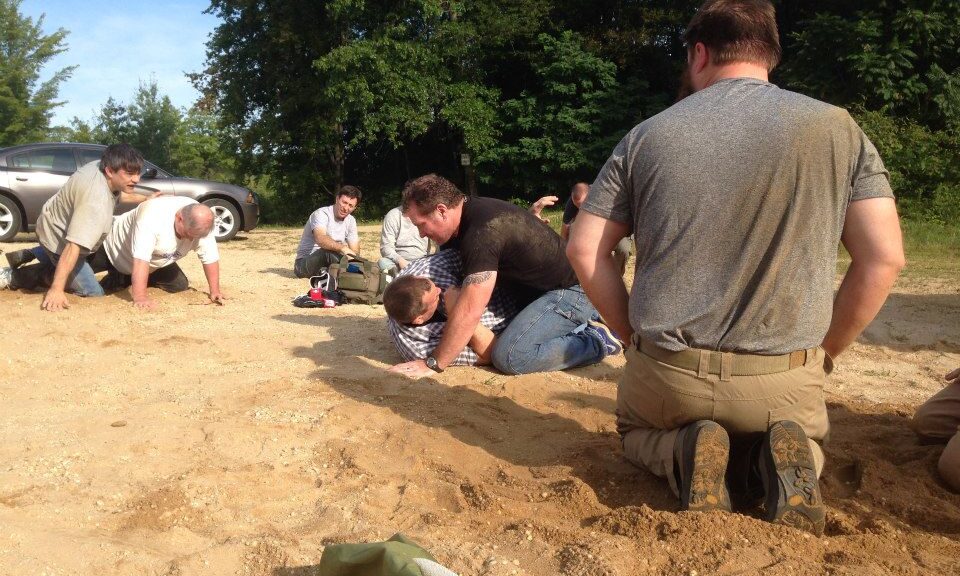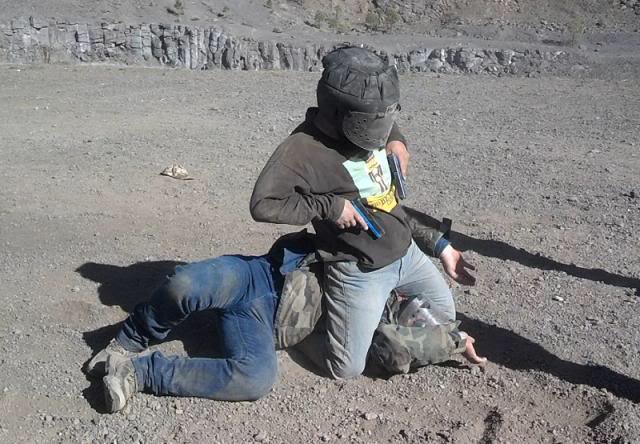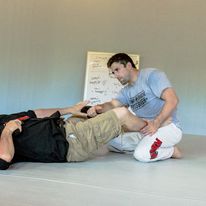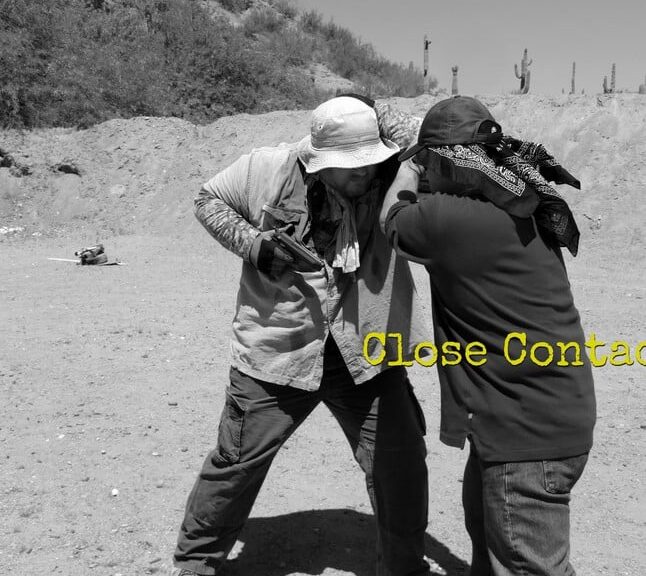All posts by Cecil Burch
Making a Revolver Easier to Shoot
Over the past couple of decades revolver shooting has basically fallen out of favor with most in the mainstream self-preservation-oriented gun community. Since the mid-90s the polymer Striker Fired 9mm pistol has reigned supreme and most everyone who have started shooting after that has most likely had little to no experience with revolvers.
The problem arises when people newer to the community begin to comment on things they don’t have much firsthand experience with. Just as if someone who has only driven automatic transmission cars would be at a great loss if they suddenly were confronted with the manual transmission vehicle, so too is someone who only understands semi-auto pistols trying to wrap their head around the handling and operations of a wheel gun.
Too often people try to talk about the pros and cons of revolvers without really knowing what those pros and cons actually are, and the nuanced understanding that only comes from a depth and breadth of experience and knowledge.
One criticism thrown towards revolvers by people who don’t have a deep wellspring of experience with them tends to be that they are harder to shoot than a typical polymer Wondernine. That is actually not completely the case. There are ways to make revolvers easy to shoot with very little time, effort or money. Quite possibly the single biggest advantage to making a revolver easier to shoot, and one in which it is totally superior to all semi-auto pistols, is that in the grips.
Many modern pistols have minor tweaks that can be made to the grip. For example, a lot of them come with interchangeable back straps and a very few number of them come with interchangeable grip panels. However even with that there is a very, very finite level of adjustability that the end user can do. Any more that’s needed to really fit the hand requires major work at the level of an experienced gunsmith which then requires a lot of time away from the owner, a great deal of money, and hassle in sending it off.
Revolvers on the other hand can be easily adjusted to fit anyone’s hand, and that adjustment can be done by the end user essentially using a screwdriver and a few minutes worth of work. The revolver never has to be sent away, nor do they require a long period of time for the gunsmith to do the work.Most major revolvers have a huge aftermarket with an incredible number of options in which nearly any revolver can be made to fit anyone’s hand or for their particular context. Grip manufacturers like Hogue, Pachymar, Altamont, Badger, Etc. offer wood, G10, or rubber grips and almost any possible configuration that an end user could want. And all of them can be installed with a screwdriver and less than 5 minutes worth of work. Furthermore, unless you desire a particularly rare wood almost all grips are under $100 with most of them being under $50. There were up to very recent times some grip makers where you could send a tracing of your hands, and they would make a grip totally tailored to your precise fit. How many wondernines can say that?
None of that is true for any semi-auto pistol on the market today. I as the end user can configure my revolver to fit me exactly how I need in nearly the blink of an eye. So the next time you hear someone comment online or in an article how revolvers are tough to shoot, understand that they most likely have a limited knowledge base, probably don’t know the nuances of running or carrying a revolver, and are probably not the people to talk to about wheel guns. Instead take an extra minute or two to find the true subject matter experts like Wayne Dobbs, Chuck Haggard, Tom Givens and a small handful of others. Get their thoughts on running a revolver and follow their suggestions.
Take a look at the picture of my LCR. I have Rogers grips on it because for me that is the perfect compromise stock that fits my hand well, gives good shooting control, and still is very concealable. Next to it is a laser grip that’s good, as well as a Hogue G10 that fills the hand and makes shooting even 327 mags reasonably okay to do, BUT is not a good stick for ankle or pocket carry. Not pictured are Hogue Bantam grips which are super concealable but are too small for hands to control the gun. But it is an option. ANy of these can be popped on in a couple of minutes, and the total cost of ALL the stocks put together is under $200. Quite a bargain consisted to a typical grip job on a polymer pistol.
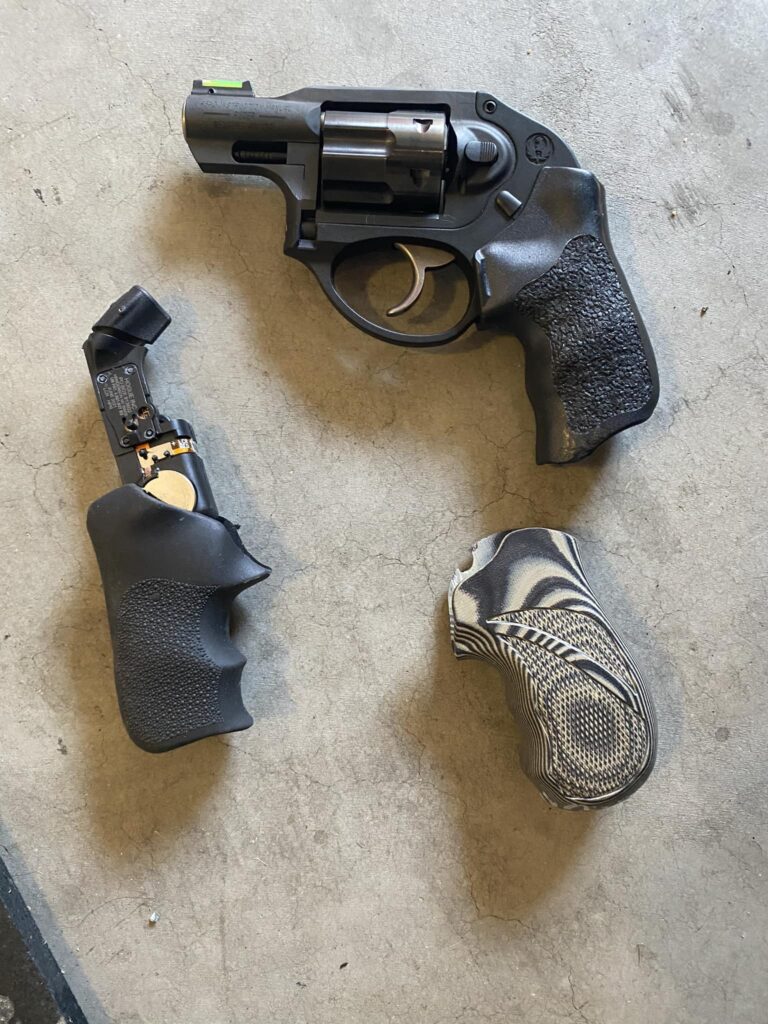
Entangled Fight with Weapons
I literally have multiple hundreds of these situations on either video or other documented media. Normally, I like to write up detailed analysis and then post them, but that takes a lot of time that I often don’t have. And unfortunately, there are still a lot of people out there who try to insist these things absolutely never happen. So rather than concede the field to them and let good guys get bad info, I am just going to start posting these things, even without the analysis. And here is the first.
A bus driver in Oakland is attacked out of nowhere by a woman with a hammer, and then a gun.
Practice vs Training
Dr. George Sheehan was a medical doctor and author, and was a high level runner. He once said this:
“We need all three activities. Exercise is a science. Play is an art. Sport is both. Exercise is mechanical. Play is free-flowing. Sport is exercise with rules and a reckoning at the finish. Sport is exercise with consequences.”
This is an important distinction for training. We need all three of these components to maximize “training”. Don’t get bogged down in semantics and arguing about what is practice vs training or similar nonsense. We need them all to achieve our best performance.
And for those who are focused solely on self-defense, yes, you need all three just the same. If you like, you can substitute well run Force-on-Force scenarios for competition in this context. But remember even that is only one part of the trifecta.
Grappling in the Real World : A Case Study
To me, this is a fascinating video.
It is incredibly fascinating for multiple reasons.
1) People on the internet LOVE to say grappling never happens in the real world, especially for private citizens, 2) the same people will also say that you will get killed if you do go to the ground, and, 3) in a key point pertinent to the context of this video, “just shoot the bad guy”.
Let’s look at these points in a bit of detail to help illustrate why you should not necessarily listen to many internet comments.
On #3 – Sure, IF we can get a gun out without interference, and IF we can get effective hits on target, then this could be a good plan. Except that here that is completely off the table. Why? Because the victim was a flight attendant just getting off work (i.e. she just got off a plane) and was still inside the airport, meaning she had zero chance of having access to a gun! Does that mean she does not deserve to defend herself? Should she just accept her fate? That is a repellant thought, and anyone thinking that should be ashamed of themselves. But unfortunately, that is a mantra that keeps getting spouted by some elements in the gun community. It’s a crazy idea but there are other eminently practical ways to effectively defend yourself that does not involve firearms.
There is a trite idea that floats around the gun community and that is something along the lines of “I don’t go anywhere without a gun!” First of all, that is a lie. There are a number of places in the world , even in a pro-carry state like AZ where you cannot, under possible penalty of law, carry, even if you are LE or military. If you choose to live your life where you go to very few places and live like a hermit so you can always have a gun on you, then cool. What you do does not impact me so go for it bro, but like 98% of the people in the country, I prefer to enjoy my life and will go to many places where I cannot have a firearm. And as an instructor of self-preservation skills, I believe that every single person anywhere in the world has the right to defend themselves no matter what the circumstances, and I don’t want anyone to suffer pain, violence, or death merely because they don’t have a gun as a crutch.
As to point 1) if you still continue to bleat about grappling does not happen, then you are either willfully lying (probably to rationalize your own lack of skill in that area and you do not have the moral fiber to admit it), or willfully ignorant, in which case you should not be listened to at all because you are wrong about this, so you are most likely wrong about most everything else. We have thousands of real world DOCUMENTED cases where grappling happened, and addressing point #2, grappling worked great! Is it always a good thing to entangle or go to the ground? Of course not! This is the real world we are discussing, and in the real world there is nuance and context to always consider.
But, we have a monumental amount of empirical data where it does work, and is a good idea. As in this case with this woman. Do you really think she could have stayed on her feet and fought off a substantially bigger, stronger committed attacker? By going to the ground and using good techniques and good strategy, she took minimal damage, and came out of this violent encounter pretty well. I will wait for someone to come up with a “better answer” that makes sense and would be a real world possibility.
While many people prefer to focus only on lethal force level incidents where guns are primary, I will continue to be a generalist in my self-preservation outlook, both as an instructor, as well as an individual.
Oklahoma City Seminar 2/23-25. 2024
IAC Seminar
OKC, OK IAC Seminar 2/23-25 , 2024
I am pumped to head back to the amazing facility at Meadhall in OK for my second semianr of 2024. for the first time, and it is a great way to kick off my 2024 seminar schedule. Meadhall has a great (and large) indoor training area with plenty of mats, so we are free from any incliment weather no matter what, so this is a perfect place and time to to take the plunge into the H2H in a Weapon Based Environment world, or if you have trained before. Come join us!
Contrary to popular belief, many empty-handed fights and those involving weapons end up entangled, either standing or on the ground. No amount of pontificating or self-proclaimed “expert” posturing will change this simple fact. If you ignore this reality, you may very well find yourself in a situation you cannot handle with disastrous consequences.
This course is designed to give the layman a realistic and functional set of concepts, techniques, methodologies, training drills and experiences that will prepare them for a worst-case grappling scenario. All techniques and concepts are high percentile applications which span a wide spectrum of confrontations.
Training consists of presentation, drilling and Force-On-Force evolutions providing attendees with immediate feedback regarding the efficacy of the skills learned, all delivered in a professional, ego free manner.
The goal of this course is not to create a “ground fighter” or grappler. The objective is to provide attendees who have limited training time and resources with solid ground survival and escape fundamentals geared toward the increasingly violent weapon-based environments they may live, work and/or travel within. And all techniques/concepts are from Brazilian Jiu-Jitsu, Wrestling, and Boxing and are combat proven over the past 80 years by thousands and thousands of practitioners, including the U.S. Army.
These methods are for everyone regardless of physical condition – young, old, male, female, athlete or not – You DO NOT have to be a professional fighter to perform at a functional level. This will be a class about physical training, but it is NOT boot camp. Participants may go at the pace that is comfortable for them, while trying to push the envelope of their own individual performance.
Requirements: loose, comfortable but durable clothes, mouthpiece, cup, notebook, and an open mind. Boxing or MMA gloves are strongly encouraged but are not mandatory. Blue Guns and matched holsters, and training knives are a good idea, but there will be loaners available.
Surviving/defending/escaping the bottom
Getting back to your feet / staying upright
Defending against strikes on the ground or clinch
Denying the attacker weapon access – understanding technique, positional hierarchy, and timing
Proper role of “dirty tactics”
Multiple opponents
Essential training principles, methods, and drills
Underlying concepts and mindset for the clinch in a self-defense context
Dealing with the sucker punch/ambush
Fundamentals of the clinch
Controlling the entanglement
Disengaging and making distance for escape, weapons access or orientation reset
Performance coaching and troubleshooting
Structuring and balancing your training for a real world lifestyle
Use the code “DEPOSIT” to sign up for 50% (you can the balance the week of the class).
The Surreptitious Draw
Over the past couple of years, there has been a minor interest from more forward thinking trainers and voices in the gun training community, in the concept of the surreptitious/clandestine/hidden draw.
I am all for that. As a matter of fact, I am a full blown believer in the concept. A number of us fifteen + years ago spent some time talking about this very idea in the old Total Protection Interactive discussion forum. It is extremely useful for almost anyone to have in their arsenal of techniques. Let us practice it, and build a credible and functional way of employing this principle.
However, there is one issue that arises that I don’t believe a single person has addressed.
What is our metric?
In other words, how do we know that we have a good surreptitious draw?
For example, we know to check our normal concealed carry draw, we need to be on a timer. It is ridiculous to say “I feel like I have a 1.5 second draw. I have not timed it, but it feels that fast to me.” Anyone would understand the above statement makes zero sense, and has no bearing on reality.
As well, to make sure we can make precise shots on a given target, we have to check that by scoring the target and seeing exactly where my rounds hit. No one would accept “Well, I know I can make that hostage rescue shot at 25 yards. I have never tried it, but I know how to shoot and hit.” Again, that is a horrible approach.
If I need to check my H2H skills, I have to spar against resisting opponents with oppositional will and freedom of action to make sure my techniques will work when I need them to. Just doing forms in the air, or doing a move on a completely compliant partner cannot tell me anything about the functionality of any move.
So if we understand that we need to have a metric to measure ourselves against, how do we do it with the clandestine draw? How do we know in our heart of hearts that we stand a reasonable chance of pulling it off on demand against a violent assault?
I don’t have the answer. I wish I did. But at least I am raising the question and throwing it out there in order that some of the very clever folks in the community start thinking about it and maybe one day soon we will have a good solution to this issue.
Keep working on this skill, but also think about how we can ensure it is at a good level of practicality.
OKC, OK Seminar 2/23-25,2024
IAC Seminar
OKC, OK IAC Seminar 2/23-25 , 2024
I am pumped to head back to the amazing facility at Meadhall in OK for my second semianr of 2024. for the first time, and it is a great way to kick off my 2024 seminar schedule. Meadhall has a great (and large) indoor training area with plenty of mats, so we are free from any incliment weather no matter what, so this is a perfect place and time to to take the plunge into the H2H in a Weapon Based Environment world, or if you have trained before. Come join us!
Contrary to popular belief, many empty-handed fights and those involving weapons end up entangled, either standing or on the ground. No amount of pontificating or self-proclaimed “expert” posturing will change this simple fact. If you ignore this reality, you may very well find yourself in a situation you cannot handle with disastrous consequences.
This course is designed to give the layman a realistic and functional set of concepts, techniques, methodologies, training drills and experiences that will prepare them for a worst-case grappling scenario. All techniques and concepts are high percentile applications which span a wide spectrum of confrontations.
Training consists of presentation, drilling and Force-On-Force evolutions providing attendees with immediate feedback regarding the efficacy of the skills learned, all delivered in a professional, ego free manner.
The goal of this course is not to create a “ground fighter” or grappler. The objective is to provide attendees who have limited training time and resources with solid ground survival and escape fundamentals geared toward the increasingly violent weapon-based environments they may live, work and/or travel within. And all techniques/concepts are from Brazilian Jiu-Jitsu, Wrestling, and Boxing and are combat proven over the past 80 years by thousands and thousands of practitioners, including the U.S. Army.
These methods are for everyone regardless of physical condition – young, old, male, female, athlete or not – You DO NOT have to be a professional fighter to perform at a functional level. This will be a class about physical training, but it is NOT boot camp. Participants may go at the pace that is comfortable for them, while trying to push the envelope of their own individual performance.
Requirements: loose, comfortable but durable clothes, mouthpiece, cup, notebook, and an open mind. Boxing or MMA gloves are strongly encouraged but are not mandatory. Blue Guns and matched holsters, and training knives are a good idea, but there will be loaners available.
Surviving/defending/escaping the bottom
Getting back to your feet / staying upright
Defending against strikes on the ground or clinch
Denying the attacker weapon access – understanding technique, positional hierarchy, and timing
Proper role of “dirty tactics”
Multiple opponents
Essential training principles, methods, and drills
Underlying concepts and mindset for the clinch in a self-defense context
Dealing with the sucker punch/ambush
Fundamentals of the clinch
Controlling the entanglement
Disengaging and making distance for escape, weapons access or orientation reset
Performance coaching and troubleshooting
Structuring and balancing your training for a real world lifestyle
link here: Use the code “DEPOSIT” to sign up for 50% (you can the balance the week of the class).
Punch in the Face
There is a very famous saying in Brazilian Jiu Jitsu and it’s attributed to Carlson Gracie Sr. What he said decades ago was ” take a black belt, punch him in the face and he becomes a brown belt. Punch him in the face again and he becomes a purple belt “
For those who don’t know Carlson Sr. was essentially the second champion in the Gracie family. After his Uncle Helio got a bit older into his mid to late 40s and was no longer able to fight the challenge matches that he had the previous 25 years, Carlson took over and was the family Champion through most of the 60s and into the early 70s. He also was instrumental in bringing modern training concepts into the traditional world of valle tudo ( in other words traditional Brazilian MMA). Carlson built one of the first teams both to compete in Jujitsu and to compete in MMA, so he understood a Jujitsu player getting punched in the face and what can happen.
Essentially his point was that you needed to train in the situation of getting punched otherwise if it was your first time your skill goes out the window. He was an early advocate of cross training to some level and to do all your traditional Jiu-Jitsu stuff while punching or getting punched. and he and his team were incredibly successful at doing so.
What Carlson was pointing out that you could have an awesome game plan and awesome skill to pull it off, but if you are not somewhat inoculated to incoming violence – including Getting punched or getting struck in the face over and over again – then there is a good chance your game plan and your skill goes out the window. And this is true across the board in all areas of self-preservation and self-defense, to include shooting.
Shooters need to understand this concept almost more than anybody else, mostly because it is not part of almost any shooting training course. The single most overriding reason being that in almost all shooting training there is no oppositional pressure. There is no one putting direct physical pressure on your ability to shoot. Unfortunately, in the real world the bad guy is always doing exactly that, and his oppositional pressure may very well include hitting you in the face over and over and over and over again. What you will quickly find is that your sub second draw suddenly after a punch in the face becomes a two+ second draw. Get punched again and now you’re probably not even finishing the draw and there’s a very good chance that your gun that you brought to the fight is now up for grabs to whoever can control it.
Of course, there is someone out there reading this and going “I never let anyone get that close to me. I will shoot them long before they can punch.” Stop living your self-indulgent and mastubatory John Wick fantasies. This is impossible in the real world. Please try to shout “Get back from me! I am in fear for my life!” while you are in line at the grocery store. Or the bank. Or TSA. Uniformed people will very quickly get VERY close to you and you will have lots of ‘splaining to do.
If you think you can maintain distance at all times, it is very easy to prove. Get a video out, some safetly equipment, and try it out on someone who has incentive to get close. I have spenbt 20+ years working this problem, and have seen a lot of people try to do it. I know how it will go 90% of the time.
So take some time to make sure your draw – or whatever self-defense tactics you prefer – can withstand a punch in the face.
IAC North Carolina Seminar January 26-28, 2024
I am pumped to get to NC for the first time, and it is a great way to kick off my 2024 seminar schedule. The host has a great group around him, so this is a perfect place and time to to take the plunge into the H2H in a Weapon Based Environment world, or if you have trained before. Come join us!
Contrary to popular belief, many empty-handed fights and those involving weapons end up entangled, either standing or on the ground. No amount of pontificating or self-proclaimed “expert” posturing will change this simple fact. If you ignore this reality, you may very well find yourself in a situation you cannot handle with disastrous consequences.
This course is designed to give the layman a realistic and functional set of concepts, techniques, methodologies, training drills and experiences that will prepare them for a worst-case grappling scenario. All techniques and concepts are high percentile applications which span a wide spectrum of confrontations.
Training consists of presentation, drilling and Force-On-Force evolutions providing attendees with immediate feedback regarding the efficacy of the skills learned, all delivered in a professional, ego free manner.
The goal of this course is not to create a “ground fighter” or grappler. The objective is to provide attendees who have limited training time and resources with solid ground survival and escape fundamentals geared toward the increasingly violent weapon-based environments they may live, work and/or travel within. And all techniques/concepts are from Brazilian Jiu-Jitsu, Wrestling, and Boxing and are combat proven over the past 80 years by thousands and thousands of practitioners, including the U.S. Army.
These methods are for everyone regardless of physical condition – young, old, male, female, athlete or not – You DO NOT have to be a professional fighter to perform at a functional level. This will be a class about physical training, but it is NOT boot camp. Participants may go at the pace that is comfortable for them, while trying to push the envelope of their own individual performance.
Requirements: loose, comfortable but durable clothes, mouthpiece, cup, notebook, and an open mind. Boxing or MMA gloves are strongly encouraged but are not mandatory. Blue Guns and matched holsters, and training knives are a good idea, but there will be loaners available.
Surviving/defending/escaping the bottom
Getting back to your feet / staying upright
Defending against strikes on the ground or clinch
Denying the attacker weapon access – understanding technique, positional hierarchy, and timing
Proper role of “dirty tactics”
Multiple opponents
Essential training principles, methods, and drills
Underlying concepts and mindset for the clinch in a self-defense context
Dealing with the sucker punch/ambush
Fundamentals of the clinch
Controlling the entanglement
Disengaging and making distance for escape, weapons access or orientation reset
Performance coaching and troubleshooting
Structuring and balancing your training for a real world lifestyle
link to sign up in the comments. Use the code “DEPOSIT” to sign up for 50% (you can the balance the week of the class).

